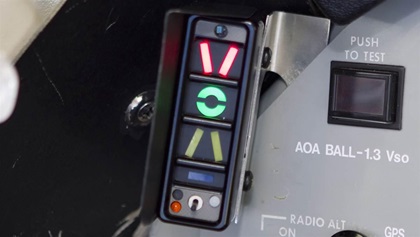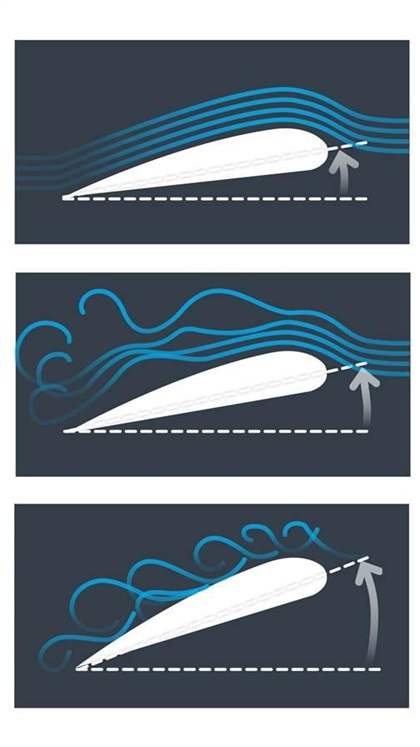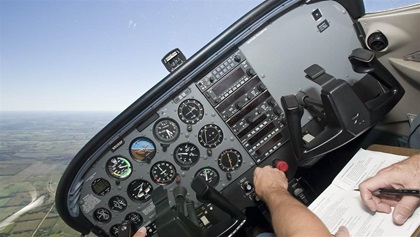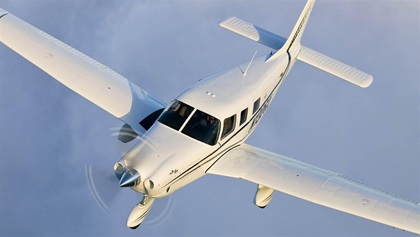Defeat the bully
Stalls are toothless, once you know how to defang them

Love stalls or hate them—and many students do hate them—stall recovery is a critical part of flight training. Pilots must learn to maneuver an airplane safely at low airspeeds and at high angles of attack. It’s what we do whenever we take off and land. We need to be able to recognize the onset of a stall and learn how to prevent a loss of control close to the ground.
Stalls and stall recovery take up a lot of real estate in student pilots’ minds. First, there’s the word itself: stall. Most of us learn to drive a car before we learn to fly an airplane. When learning to drive, a stall refers to an engine stoppage.
Pilots quickly learn that in flying, a stall isn’t related to the engine at all. It refers to the separation of air over the wing, which causes the wing to stop flying. That doesn’t sound so scary. Has the wing stopped flying? Do what you must to get it flying again.
But remember, the law of primacy suggests that the side of an issue presented first will have greater effectiveness in persuasion than the side presented subsequently. So, your rational brain may be saying “no big deal,” but your insides may clench as you lapse into car-driver mode and associate “stall” with “engine stoppage”—which, in an airplane, can be a very big deal.
Some students come into flight training tense about stalls simply from having read about them, learning that an aerodynamic stall can develop into a spin. And for others, it happens when they start learning the process of stall recovery in the airplane.
“Maybe it’s because it’s one of the first maneuvers we teach and students are barely comfortable with straight and level flight, let alone unusual attitudes,” said Sarina Larson, a Boise, Idaho-based flight instructor and airline pilot. That’s plausible, particularly when learning how to recover from a power-on stall: At full power, the aircraft seems to hang in the air for many agonizing moments while you struggle to keep the ball in the turn coordinator centered and remind yourself don’t pick up a wing with aileron!
Nobody has to love stalls and stall recovery, but students can learn them—and CFIs can teach them—in ways that make them less intimidating.
It starts on the ground
Knowledge is power. A thorough discussion of the aerodynamics at play during the impending stall, the stall itself, and the recovery from said stall can help the student to dispassionately break down the maneuver into chunks. Also needed is a thoughtful explanation of how stall prevention is part of routine flying. The student must understand the circumstances in which an airplane could enter a stall, as well as the means to correct it. Visual aids can help, and there are dozens of YouTube videos that illustrate how lift is disrupted over an airfoil when the angle of attack is increased past its critical angle.
“I generally approach it with solid explanations [and] dispel any myths,” said Casey Hansen, a flight instructor in Cedar Rapids, Iowa. “I find understanding is a good way to combat fear.” Myths and misconceptions include the idea that because the nose has pitched down, the airplane is about to fall out of the sky. It’s not—it’s still flying, just not with as much lift.
In the air
 Now it’s time to get in the airplane. The student has been thoroughly briefed and says she understands everything that’s about to happen. Cool—let’s head out to the practice area and we’ll jump right into power-on stalls.
Now it’s time to get in the airplane. The student has been thoroughly briefed and says she understands everything that’s about to happen. Cool—let’s head out to the practice area and we’ll jump right into power-on stalls.
Hold up. The student says she understands everything that’s about to happen, but remember what we said about the law of primacy: She may still associate “stalls” with fear, even though she now knows better.
When learning any type of stall, you want to replace an instinctive reaction—oh, no, the nose is falling, I must pull back on the yoke—with the correct, trained response—I’ve exceeded the wing’s critical angle of attack, and I must push forward on the controls to lower it.
Many CFIs begin with the somewhat gentler power-off stall recovery. At an appropriate altitude and after conducting clearing turns, airspeed is reduced; the airplane is put in landing configuration with appropriate flap setting; then, power is reduced or brought to idle; and back-elevator is applied. When the stall occurs, the nose drop is not as dramatic, but it still can be an uncomfortable experience punctuated by a blaring stall warning horn and the abrupt application of engine power once back-pressure is reduced to lower the angle of attack—not to mention the fact that the pilot is accomplishing all of this while keeping the airplane coordinated with judicious rudder pedal usage.
Before moving on to the power-on stall, Larson said she first demonstrates a simple falling leaf maneuver. So called because the back-and-forth movement of the airplane resembles a leaf falling from the sky, this is similar to a power-on stall in that full power is applied, wings are held level, and the nose is raised until the stall occurs. When the nose pitches down, instead of applying forward elevator, the pilot keeps holding full back elevator and lets the airplane pitch back up. It will stall again, and pitch back down. The pilot lifts a wing as needed with the appropriate rudder pedal. This maneuver is not required by the airman certification standards, but it does a good job of showing what the airplane will do.
Seattle-based CFI Bruce Williams said he performs a series of “non-ACS” stalls with student pilots and customers. “These maneuvers enhance understanding and build confidence,” he said. You can view a selection of Williams’ videos on YouTube (the “Stalls and Spins” playlist from @BruceAirFlying).
Now are we ready to learn power-on stall recovery? Possibly. This exercise simulates the lead-up to a power-on stall such as might occur after takeoff if the pilot becomes distracted or disoriented and climbs too steeply. At a safe altitude, execute clearing turns, then reduce power and slow to VX or less. Configure the airplane as you would for a climb—with landing gear down, climb flaps if required, then add climb power while simultaneously raising the nose and keeping the ball centered with increasing right rudder pressure. At the stall break, recovery is initiated by lowering the nose and letting the airplane accelerate to VX or VY.
Some CFIs advocate the use of full power and pitching up without delay. You’re meant to keep the nose straight and use peripheral vision to tell if the wings are level, but that can be difficult when the nose is pitched up so far. Meanwhile, that stall horn is blaring, your palms may be perspiring, and you may have such a death grip on the yoke that you’re inadvertently banking the airplane—which is not desirable.
An alternative is to reduce the pitch angle somewhat and allow the airspeed to bleed off. The airplane will still reach its critical angle of attack, but the student will have more aileron control. Or, when applying climb power, keep it to 65 percent power rather than full to produce a stall break that’s not as severe.
Then there’s CFI and Editor at Large Dave Hirschman’s advice, which is to go old school and train in a Piper Cub or Aeronca Champ, or some other airplane without a stall warning horn at all. With no stall horn blaring, the student can focus on the other cues that the airplane is giving: the buffeting as airflow erodes over the wing surface; the changing sound of the slipstream; the mushiness of the controls; even the simple visual signal of a high pitch angle.
No Cub or Champ? No problem. Consider pulling the circuit breaker on the stall horn, Hirschman said.
Once stall recovery is tackled, simple repetition may be needed to help the student cement the procedure and become more comfortable with it. A pilot may never learn to love stalls, but he or she can learn to forgive the schoolyard bully by understanding the aerodynamics behind its menacing mask.
Jill W. Tallman is technical editor of Flight Training.


 If you’re having pre-checkride jitters, terrific! It shows you’ve got pride in how you fly and want to perform to the best of your ability. Also, some slightly elevated level of adrenaline helps focus and leads to peak performance, so welcome it.
If you’re having pre-checkride jitters, terrific! It shows you’ve got pride in how you fly and want to perform to the best of your ability. Also, some slightly elevated level of adrenaline helps focus and leads to peak performance, so welcome it.  The worst turbulence I ever encountered in my student pilot days was on a flight to Oshkosh—for the big airshow in Wisconsin. I was simply a passenger in the right seat, listening and observing and trying to be helpful if needed, but the pilot had done this many times before. However, he made a slight miscalculation and only had a minute to warn me as we entered the jet wash of a larger aircraft around Chicago—“Watch your head, this is going to hurt.” My head thumped the ceiling of the Bonanza hard and we experienced a moment of squirrelly motion before we leveled off, resuming an uneventful flight.
The worst turbulence I ever encountered in my student pilot days was on a flight to Oshkosh—for the big airshow in Wisconsin. I was simply a passenger in the right seat, listening and observing and trying to be helpful if needed, but the pilot had done this many times before. However, he made a slight miscalculation and only had a minute to warn me as we entered the jet wash of a larger aircraft around Chicago—“Watch your head, this is going to hurt.” My head thumped the ceiling of the Bonanza hard and we experienced a moment of squirrelly motion before we leveled off, resuming an uneventful flight.

